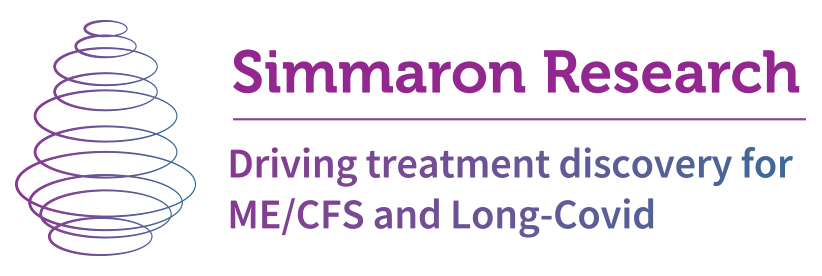New Pathways: A Step Towards Fine-Tuning Treatments for ME/CFS?
Most chronic fatigue syndrome (ME/CFS) studies focus on females, but for once we have a study contrasting females and males. It makes sense that this group - hailing from Dr. Klimas's Institute for Neuroimmune Studies, the University of Miami, the Veterans Center in Miami, the University of Rochester and the University of Alberta - would study both genders. Their modeling studies have made it clear that gender matters. This small but intense study compared the gene expression of 23 females and 10 males with ME/CFS and 21 healthy controls. The U.S. and Canadian researchers then isolated the most impactful genes and compared them, gender to gender and ME/CFS patients to healthy controls.They then used a variety of fatigue measures to identify which genes were most associated with fatigue. With these fatiguing genes in hand, they then cross-referenced their results with a genetic-drug database to see which drugs might potentially be useful in ME/CFS.
This small but intense study compared the gene expression of 23 females and 10 males with ME/CFS and 21 healthy controls. The U.S. and Canadian researchers then isolated the most impactful genes and compared them, gender to gender and ME/CFS patients to healthy controls.They then used a variety of fatigue measures to identify which genes were most associated with fatigue. With these fatiguing genes in hand, they then cross-referenced their results with a genetic-drug database to see which drugs might potentially be useful in ME/CFS.
Results
Treatment Avenues in Myalgic Encephalomyelitis/Chronic Fatigue Syndrome: A Split-gender Pharmacogenomic Study of Gene-expression Modules Mary G. Jeffrey, M.A.1,2; Lubov Nathanson, Ph.D.1,3; Kristina Aenlle, Ph.D.1,3,4; Zachary M. Barnes, B.Sc.1,4,5,6; Mirza Baig, M.P.H.1; Gordon Broderick, Ph.D.1,2,3,7,8; Nancy G. Klimas, M.D.1,2,3; Mary Ann Fletcher, Ph.D.1,3,4; and Travis J.A. Craddock, Ph.D.1,2,3,9. Clinical Therapeutics/Volume 41, Number 5, 2019
Size Matters - for Men and for Women
The first thing that stood out was that sample size clearly matters. While the men - probably due to the small sample size (n=10) - flunked out when it came to looking for differences in gene expression, the women (n=23) excelled.The active pathways identified in the men (growth factors, immune factors, cardiac/blood factors, transcription factors, and mitochondrial factors) made sense but were identified as having only a small to medium effect on their illness. On the other hand, some of the pathways identified in the women (mostly the same as the men) appeared to have large to huge effects on their illness.Only one measly gene was significantly differently expressed in the men compared to healthy controls, but 189 were significantly differently expressed in the ME/CFS women. As far as gender goes many of the pathways were similar in both genders, but several gene modules were only highlighted in the women (TGF-b β Signaling signaling pathways, TNF-αa, and T-cell Receptor pathways).That suggests that the illness has similar underpinnings for both genders. Whether you are male or female, ME/CFS, they asserted, is a "stress mediated illness with underlying endocrine, immune, and mitochondrial imbalances accompanied by autonomic and physical dysfunction"; i.e. it's definitely a complex disease. Some of those imbalances, though, are probably different in men and women.Given the preponderance of women with this disease (and fibromyalgia) one has to ask how gender could NOT be an issue. These groups are, thankfully, looking into gender issues further. In fact, they may be the only research group that's explicitly looking at the similarities and differences between men and women with ME/CFS.Note the word "imbalance" in the group's description of the disease ("a stress mediated illness with underlying endocrine, immune, and mitochondrial imbalances"). ME/CFS is not organ damage; Klimas and Broderick et. al. believe our systems are "simply" out of balance and that's potentially good news; it's easier to tweak, reprogram, reset a system than repair physical damage.
Rest Button?
 They identified one possible reset button - the JAK-STAT pathway. When the stress response gets jacked up (and it may be jacked up all the time in ME/CFS) the JAK-STAT pathway transmits information from cytokines and growth factors to the cell nuclei. If that pathway is not working properly - and there's some evidence that it is not in ME/CFS - every time the stress response system gets activated, a discombobulated JAK-STAT pathway tells your cells to do the wrong thing.The Klimas group is not the only one to think the answer lies in signaling errors which cause our systems to overreact. Jarred Younger believes the glial cells in ME/CFS patients' brains may be pumping out cytokines at the slightest sign of trouble. The massive reaction Alan Light found to muscle metabolites during exercise didn't appear due to high numbers of muscle metabolites. Instead, small amounts of muscle metabolites appeared to be producing massive overreactions in ME/CFS patients' immune and endocrine systems.
They identified one possible reset button - the JAK-STAT pathway. When the stress response gets jacked up (and it may be jacked up all the time in ME/CFS) the JAK-STAT pathway transmits information from cytokines and growth factors to the cell nuclei. If that pathway is not working properly - and there's some evidence that it is not in ME/CFS - every time the stress response system gets activated, a discombobulated JAK-STAT pathway tells your cells to do the wrong thing.The Klimas group is not the only one to think the answer lies in signaling errors which cause our systems to overreact. Jarred Younger believes the glial cells in ME/CFS patients' brains may be pumping out cytokines at the slightest sign of trouble. The massive reaction Alan Light found to muscle metabolites during exercise didn't appear due to high numbers of muscle metabolites. Instead, small amounts of muscle metabolites appeared to be producing massive overreactions in ME/CFS patients' immune and endocrine systems.
The Fatigue Systems
The gene expression modules the Klimas/Broderick groups found most associated with fatigue were particularly interesting. In a nice piece of synchronicity, the two systems that popped up - the immune system and metabolism - are major research topics in this disease.In the immune system, two cytokines popped up: TGF-B and TNF-a.TGF-b is notable for being the only cytokine found to be consistently upregulated in a metanalysis of ME/CFS immune studies. This TGF-B pathway - which is highly associated with "sickness behavior" - was highlighted in both men and women with ME/CFS. Upregulation of this pathway can impair "motor activity" (exercise), affect energy production, produce sleep problems and cognitive issues; i.e. increased levels of it in ME/CFS could be producing "malaise" or fatigue, problems with thinking, poor sleep, etc. that often occurs when we are fighting off an infection ("sickness behavior").TNF-a is a major, major cytokine in any immunologist's book. Increased TNF-a expression in the ME/CFS group was associated with a host of problems including worsened vitality, physical functioning, social functioning, pain levels, fatigue, and sleep disturbances. TNF-a could also be contributing to the "malaise" in ME/CFS via its activation of the excitatory neurotransmitter glutamate in the brain.TNF-a is an excellent cytokine to show up in ME/CFS for a couple of reasons: it's known to be dangerous, it's associated with many serious diseases, it's getting a lot of research work, and drugs have and are being developed to affect it.The "metabolism of protein module" was, remarkably, associated with virtually every aspect of fatigue tested (physical functioning, physical limitations, SF-36 total score; general fatigue, physical and mental fatigue, reduced activity). That module, the authors suggested, could reflect an mass of inflammatory metabolites being pumped out in ME/CFS: in other words, it may all goe back to inflammation.
Building the Foundation for Fine-tuned Drug Interventions
Now that they'd identified some possibly key immune issues in ME/CFS, they asked what treatments might help. Dr. Klimas has for several years evinced a strong desire to begin immune based treatments in ME/CFS. This study was clearly intended to help build the evidentiary basis for using immune drugs in ME/CFS.Cross-referencing the gene expression results from the women with a National Institutes of Health (NIH) funded pharmacogenomics database called PharmGKB yielded several drug possibilities. The PharmGKB database provides clinical guidelines on using a person’s genetic information to determine which drugs might be effective. As far as I know this is the first time this database has been used in ME/CFS research.In what appeared to be another first, the researchers didn't simply look for drugs that could affect TNF-a - an immensely powerful cytokine which can affects many different pathways. In a step forward for personalized medicine in ME/CFS, they looked for drugs that could affect the specific pathways (M18, M41) the study indicated TNF-a was disrupting in this disease. A search for the M41 pathway, for instance, found a host of potential drugs (selective immunosuppressants, sulfonamides, aminoquinolines, and TNF-a Inhibitors) which could potentially tweak that pathway in ME/CFS. No specific FDA approved drugs, on the other hand, are focused on TGF-B, but the authors noted that TGF-B is an area of active research.It will certainly take time and much bigger studies glean out the specific immune pathways that are disrupted in ME/CFS, and to provide the evidence base that could allow doctors to prescribe drugs for them.This study suggests, though, that this is not rocket science. We have the technology to help identify the precise pathways disrupted in ME/CFS. We simply need the funding (and the large sample sizes) to do that.One wonders if, at some point patients will be able to get drugs designed to tweak the specific immune pathways at play in their ME/CFS.
A search for the M41 pathway, for instance, found a host of potential drugs (selective immunosuppressants, sulfonamides, aminoquinolines, and TNF-a Inhibitors) which could potentially tweak that pathway in ME/CFS. No specific FDA approved drugs, on the other hand, are focused on TGF-B, but the authors noted that TGF-B is an area of active research.It will certainly take time and much bigger studies glean out the specific immune pathways that are disrupted in ME/CFS, and to provide the evidence base that could allow doctors to prescribe drugs for them.This study suggests, though, that this is not rocket science. We have the technology to help identify the precise pathways disrupted in ME/CFS. We simply need the funding (and the large sample sizes) to do that.One wonders if, at some point patients will be able to get drugs designed to tweak the specific immune pathways at play in their ME/CFS.
A Complex Disease Demands A Complex Effort
"As such, there exists the potential for symptom subtypes of ME/CFS for which a single overarching treatment strategy may not be effective. Beyond this, the presence of comorbid conditions adds a layer of complexity" The authors
As the article ended the authors focused on how complex the disease with its multisystem presentation, and many comorbid illnesses, is. ME/CFS, they asserted, is not a "one disease, one-target" disease; it's probably going to take multiple treatments aiming at a variety of targets to turn this disease around.Possibly preparing us for some underwhelming results, they stated that their original treatment model for ME/CFS - the etanercept/mifepristone drug combination that was designed to first smack inflammation down, and then reset the endocrine system - needed some tweaking.
"While in our previous studies the profile of ME/CFS in women suggested targeting the Th2 immune cytokines followed by inhibition of the glucocorticoid receptor system, this predicted drug course has not yet been optimized."
The fact that their model is going to get some more tweaking is no surprise at all given the complexity of the systems they're trying to effect. The surprise would be if the models weren't being continuously tweaked as new data trickles; i.e. the models should only get better over time. 
